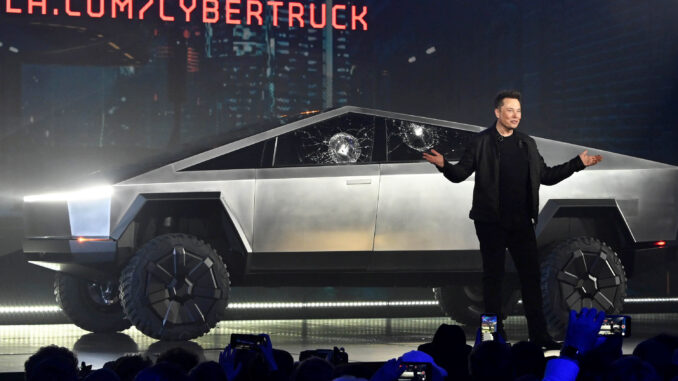
Tesla says self-driving taxis will power its growth, but the company hasn’t said when such a service would be ready or how much it would increase profits.
As sales of its electric cars have fallen, Tesla and its chief executive, Elon Musk, have sought to convince Wall Street that the company’s future lies not in the grinding business of making and selling cars but in the far more exciting world of artificial intelligence.
In Mr. Musk’s telling, one of Tesla’s main A.I.-based businesses will be driverless taxis, or robotaxis, that can operate pretty much anywhere and in any condition. Tesla is very close to perfecting such vehicles and will easily secure regulatory approval to put them on roads, Mr. Musk said last week on a conference call to discuss the company’s second-quarter results.
Mr. Musk’s vision of autonomous vehicles, or A.V.s, is not limited to cars that drive themselves. He has also claimed that individuals who buy Teslas will be able to make money when they are asleep or at work by letting the company use their cars as robotaxis.
The robotaxi service will, Mr. Musk has said, catapult Tesla’s stock market valuation, around $740 billion now, into the trillions of dollars.
But first, a lot will have to go right.
His idea would require major advances in technology and fundamental changes in the way people viewed cars. The experience of driverless taxi services like Waymo and Cruise in Phoenix, San Francisco and other cities raises questions about when such offerings will become profitable and how much money they will make.

Tesla’s technology will face stiff competition from Waymo, a subsidiary of Alphabet, the parent company of Google; ride-hailing services like Uber and Lyft; and Amazon’s self-driving business, Zoox. Carmakers including General Motors, which owns Cruise, are also pursuing autonomous driving, along with Chinese tech and auto companies like Baidu and BYD.
“It’s a supercompetitive business that’s barely profitable,” said Ross Gerber, chief executive of Gerber Kawasaki Wealth and Investment Management, which owns Tesla and Uber stock.
Tesla, which did not respond to a request for comment, became the world’s most valuable car company because investors believed Mr. Musk could achieve his goal of selling 20 million cars a year, compared with around 1.8 million last year. Toyota, the world’s largest automaker, sold more than 11 million cars in 2023. In the last six months, however, Tesla’s car sales have fallen.
Mr. Musk has recently said that the focus on the company’s sagging car business is misplaced and that investors should buy and hold Tesla stock because of its work on ambitious projects like the robotaxis and a humanoid robot called Optimus.
Some Wall Street analysts and many of Mr. Musk’s ardent fans see the pivot as evidence of his genius. But skepticism of the company’s plans has been growing, especially after the company last week reported a 45 percent drop in second-quarter profit and delayed the unveiling of its robotaxi design to October, from August.
Tesla’s stock price is down about 6 percent since the earnings report.
Mr. Gerber suggested that Mr. Musk was trying to divert attention from the company’s core business. “It’s a convenient reorientation when you’re having a hard time selling cars,” Mr. Gerber said.
Still, some analysts believe that robotaxis and self-driving software could generate significant profits for Tesla.
The entire robotaxi market may someday be worth $5 trillion, Tom Narayan, an analyst at RBC Capital Markets, said. And though he added that “regulators aren’t going to allow one company to have a monopoly,” RBC estimated that the economic potential of Tesla’s robotaxis already accounted for over $400 billion of its stock value.
Tesla offers two types of driver-assistance software for the cars it sells now. One is called Autopilot, and the other, a more advanced option, is marketed as Full Self-Driving and costs $99 per month. Some analysts say those systems could also be a huge source of profits.
